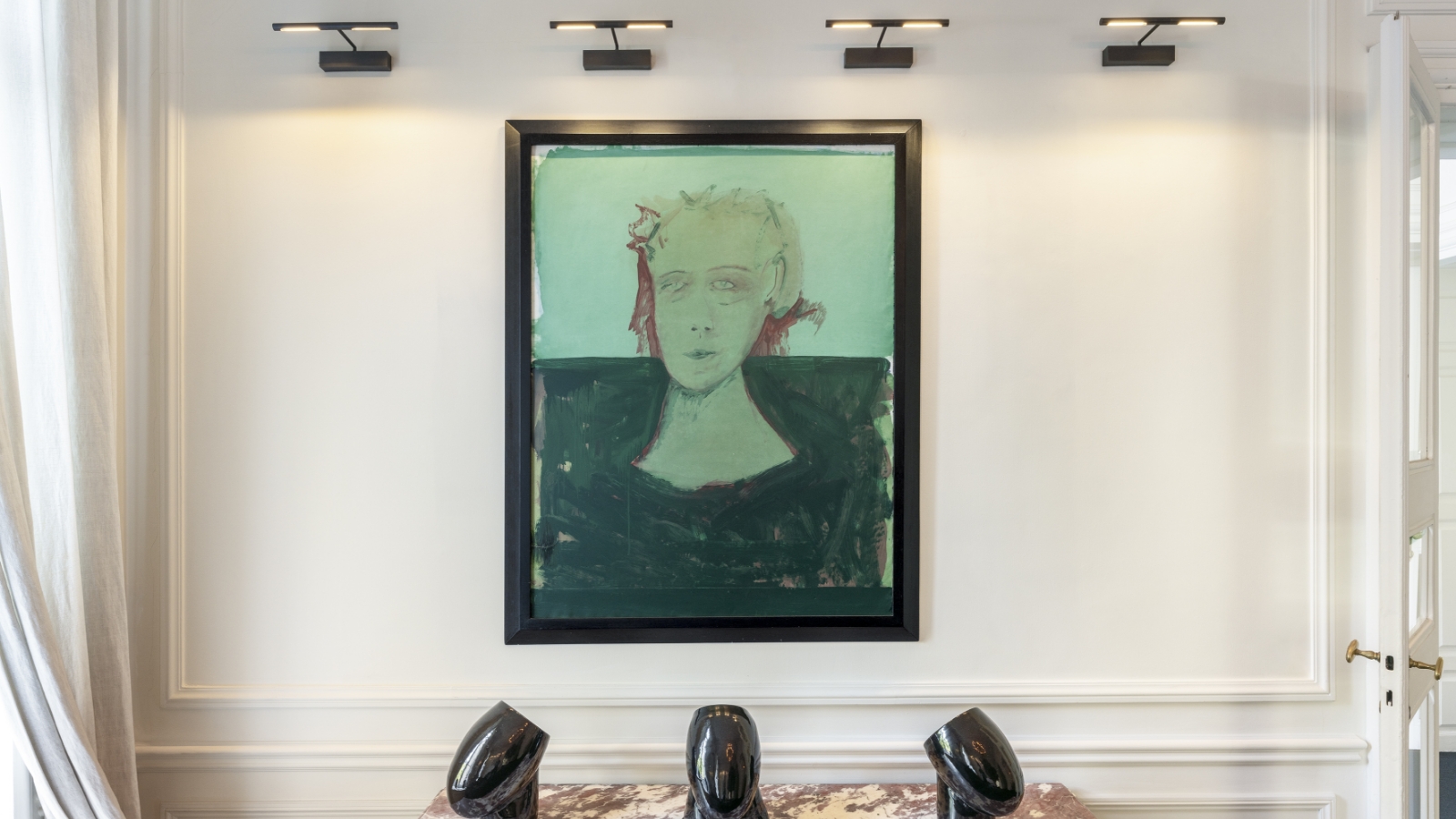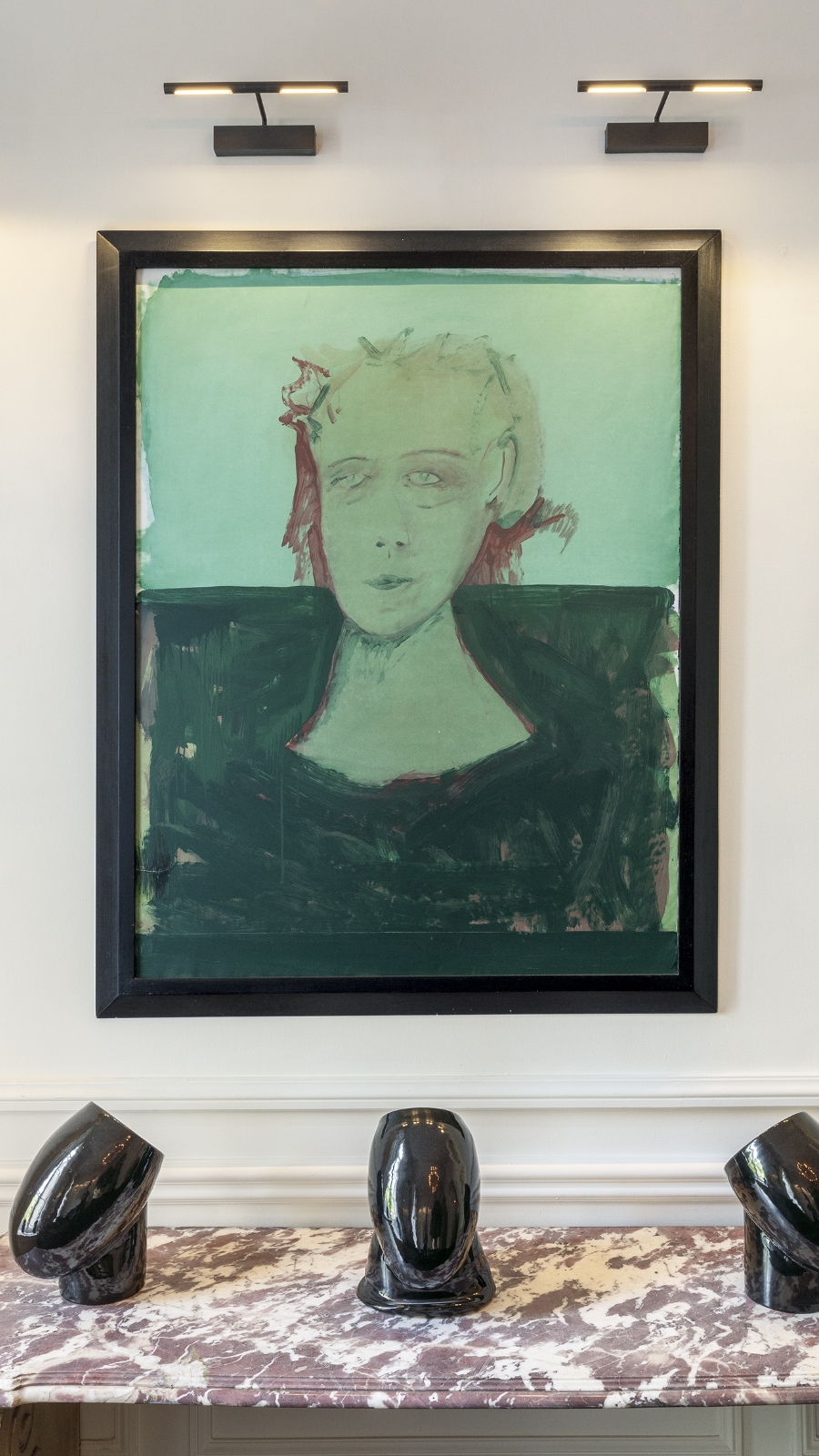
THOMAS SCHÜTTE - Executed in 1986 and 2001
Ohne Titel
LOBBY 1
Born in 1954 in Oldenbourg, former RFA. Lives and works in Düsseldorf, Germany.
Thomas Schütte’s installation Ohne Titel is comprised of a haunting portrait of a woman, which hangs poised to overlook the audience of seven jet black vessels, positioned as if turned away from her. Originally conceived as a standalone work in 1986, Frauenporträt in Grün is monumental in its depiction of the female bust, who gazes from the frame with a mournful and pensive expression. On the occasion of the artist’s self-titled solo exhibition at the Sammlung Goetz in Munich, which opened on the 19th of March 2001, the work was installed with the addition of seven recently conceived ceramic forms to create an entirely new work. In its second manifestation Untitled the work embodies fifteen years of the artist’s practice and incorporates two of Schutte’s greatly differing artistic techniques – painting and pottery.
Schütte studied at the Kunstakademie Düsseldorf under Daniel Buren and Benjamin Buchloh and Gerhard Richter. Under the guidance of Richter, Schütte learned to value the importance of a diversified artistic practice and since never settled on one particular style or technique. His subsequent body of work incorporates figuration in the form of sculpture, pottery, painting and drawing, architectural models and motifs, abstraction and furniture and neither emerges as more prominent than the other.
Schütte’s continued emphasis on figuration marked somewhat of a return to the practice in contemporary art, which had been predominantly focused on abstraction and conceptualist practice since the Second World War, aside from a few key figures. The artist’s perspective on this aspect of his practice mimics his eclectic oeuvre, ‘the approach is very different, there are some beauties, some horrors.’i Frauenporträt in Grün’s appears to combine the two, her calm expression and delicately painted lips and nose are juxtaposed with the deep red rings around her eyes. Her pallid green complexion is emphasized by the jagged strokes of red which outline it, imbuing the scene with a gruesome undertone. Schütte is deliberately ambiguous in his presentation of the figure, whose head appears hover either submerged in a deep black liquid or statuesquely decapitated on a solid surface as a marble bust. The figure’s hair is hinted at through spiky strokes in the same green hues as the skin tone, again creating a dichotomy between the potential of tangled curls or a crown of thorns. Of his portraiture as a whole, the artist said ‘it doesn’t have to be precise; you don’t have to recognize the person. It’s just a reason to make lines.
Installed alongside Schütte’s 2001 vessels, the picture takes on a portentous role as the icon, central to a gathering of forms. The smooth black glaze of the ceramic vases, transforms into the anthropomorphic shape of downturned faces, stark in their potential rejection of the central focus. The subsequent enigmatic quality of this installation allows the viewer the freedom to revel in their own interpretation. In reference to his use of materials, Schütte has said ‘I like solid things that last one hundred or one thousand years.’iii The artist favours traditional tactile materials such as clay, bronze, paper, citing their lasting presence over the ‘ephemeral’ nature of digital media, video and film. Ohne Titel epitomisesthe artist’s unique approach through its fusing of two distant practices.




